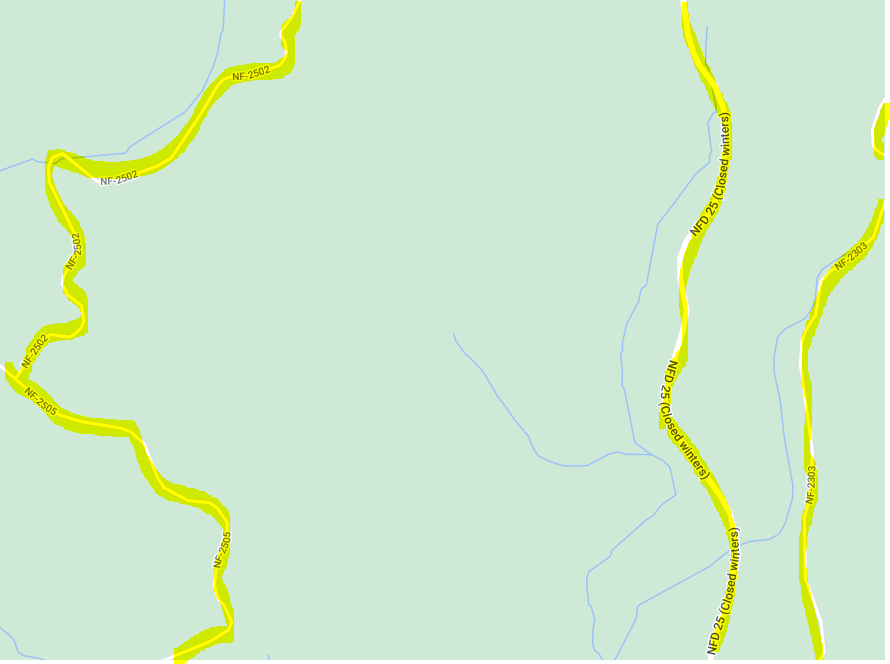Free Camping Guide - BLM land and National Forests
Camping has gotten kind of expensive with a typical campsite ranging between $15 - $25 / night depending on where you are. Of course, these can be nice to stay at and the cost is driven down if you go with a group but if you are hitting nature often, maybe it is time to start looking into free camping
I know! Free? I thought nothing was free! But there is actually a ton of area where you can camp for absolutely free (though you will have to give up amenities like toilets and running water)
There are two main areas you should look for when you are looking to dispersed camp (camping where there are not services): Bureau of Land Management (BLM) land and National Forest (USFS) land.
These two federal groups manage most of the public lands in the U.S..
Camping on Idaho BLM land. This was a semi-developed campground as it had a specific number of sites. I was pleasantly surprised to find a porta potty as well! The road to get here was very bumpy.
BLM
BLM is the largest landowner in the U.S. and has over 245 million acres across the country. That is 247 million acres where you can pitch a tent ;-) BLM falls under the Department of the Interior.
If you live on the East Coast, you might not know BLM very well because most, if not all, of the land resides west of the Mississippi River. This is because the land that BLM manages was created from land that the government had not yet designated as National Forest or given to homesteaders (surplus land). Often times, this land is used by ranchers to support livestock operations in farm country. For this reason, it can be a little more difficult to decipher what land is actually under BLM jurisdiction as it is rarely labeled in a similar way to National Forests. To look at where BLM land is, check out their map here. This map in conjunction with Google Maps is very helpful
Look how many national forests there are between Spokane, WA and Missoula, MT!
USFS
You have likely seen signs for National Forests when driving, especially if you were driving around National Parks. These National Forests, which, unlike BLM, fall under the Department of Agriculture, can often be found labeled and as green patches on Google Maps—very helpful. National Forests aim to promote sustainable usage, such as securing sustainable supply of timber and providing a large area for grazing. Within National Forests grazing, mining, hunting, harvesting and other recreations are permitted.
For both BLM and USFS land, you will need to consider a few things:
Pull off any main roadways. This will be most comfortable for you because you will be farther away from any loud traffic noises, you will be able to get out and walk around camp more easily, it will likely look nicer too. This is also important for others driving so that you do not obstruct others
When I look for National Forest land, I like to find a National Forest that I will be driving near then look into the map for what appears to be dirt roads. Sometimes these roads will be labeled, but sometimes, they may not be! (View of roads from google maps — my laptop google maps does not show actual imagery, but my phone does and is very helpful!)
Don’t go too far off the roads. To the extent that you can, find a comfy pull out without making your own marks if you are driving. If you are pitching a tent, look for an area that is not heavily vegetated — this will be most comfortable to you and best for keeping plants alive!
Bring lots of water!
There will likely be no potable water where you are staying, so make sure you bring lots of water for cooking, cleaning and drinking
Consider the animals that will be outside
Often times, this does not need to be a concern. But, if you are camping in bear country (the northwest), make sure you have brought appropriate supplies (bear cannister or bag, bear spray…)
Go to the bathroom where you can first
If you know you will be dispersed camping, consider going to the bathroom in the last major town you drive by. With human waste becoming more of a problem, if you do need to go outside, make sure you pee far away (100ft or more) from a water source—pack out TP if you use it, and if you poop, make sure you have either a shovel (to dig a 12 inch deep hole) or a wag bag—I prefer to pack out all my waste with wag bags when I am able to as opposed to digging a hole to minimize impact
A lot of the time, National Forest Roads will be labeled with NF - ###. If you see a road like this, it’s a safe bet that you can camp!




